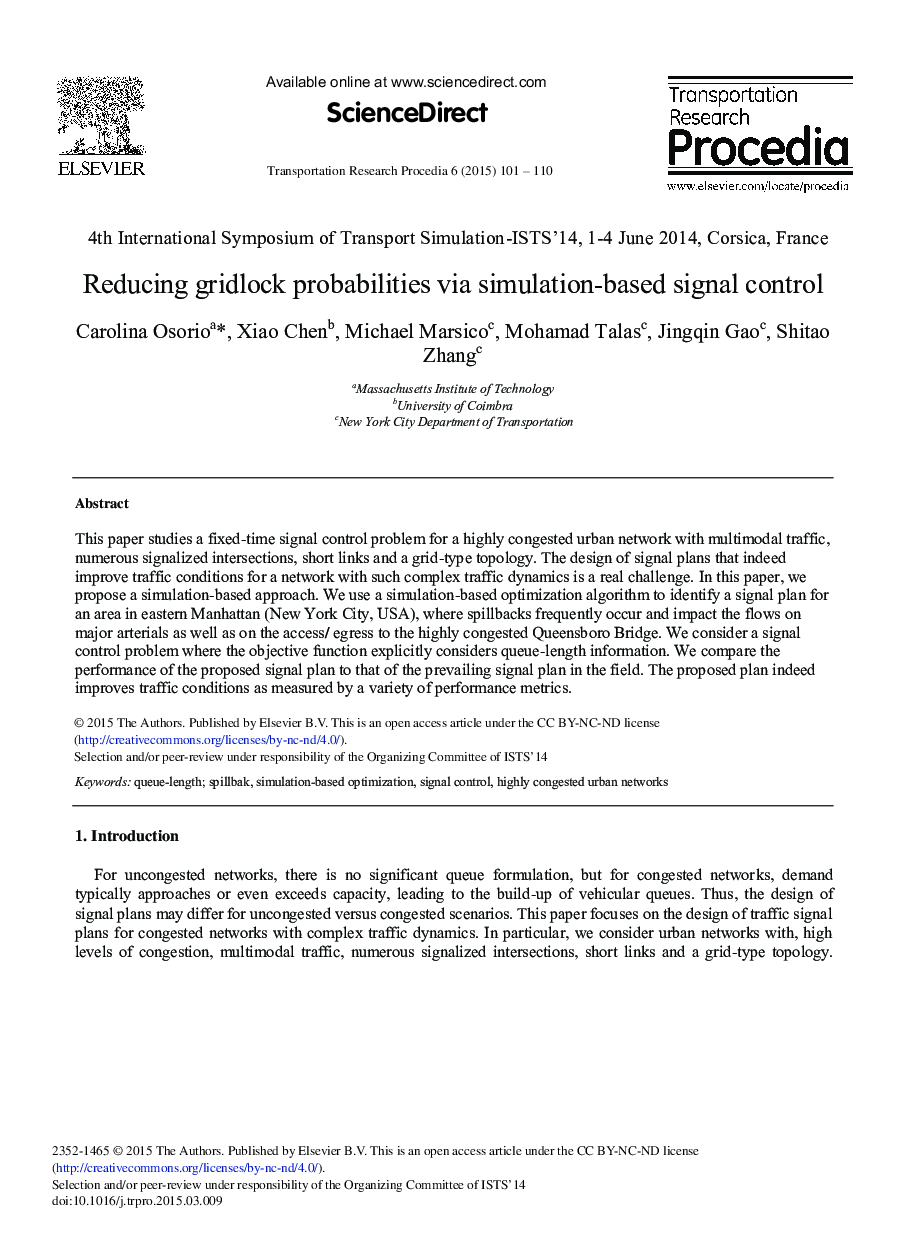| Article ID | Journal | Published Year | Pages | File Type |
|---|---|---|---|---|
| 1106546 | Transportation Research Procedia | 2015 | 10 Pages |
This paper studies a fixed-time signal control problem for a highly congested urban network with multimodal traffic, numerous signalized intersections, short links and a grid-type topology. The design of signal plans that indeed improve traffic conditions for a network with such complex traffic dynamics is a real challenge. In this paper, we propose a simulation-based approach. We use a simulation-based optimization algorithm to identify a signal plan for an area in eastern Manhattan (New York City, USA), where spillbacks frequently occur and impact the flows on major arterials as well as on the access/ egress to the highly congested Queensboro Bridge. We consider a signal control problem where the objective function explicitly considers queue-length information. We compare the performance of the proposed signal plan to that of the prevailing signal plan in the field. The proposed plan indeed improves traffic conditions as measured by a variety of performance metrics.
